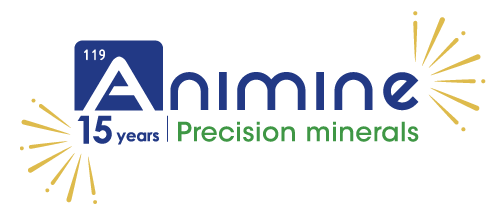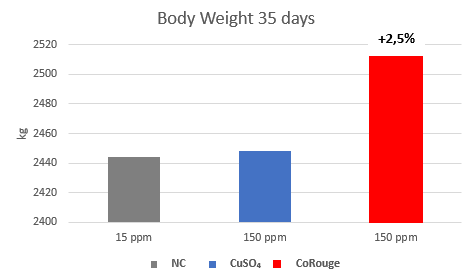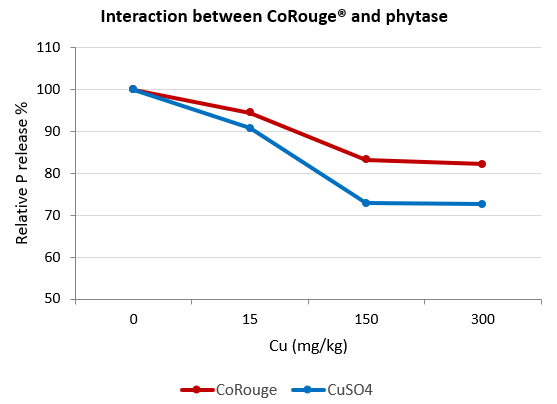> Research & Science
Including copper sulfate or dicopper oxide in the diet of broiler chickens affects…
Copper supplementation (125-250 ppm) in poultry diets is a common practice in many countries to enhance bird health, but high amounts of Cu may interact with phytate and affect animal performance. One study compared the effects of two Cu sources, copper sulfate (CuSO4) and dicopper oxide (Cu2O, CoRouge®), at three levels of dietary Cu (15, 150, 300 ppm). A total of 576 one-day-old male broiler (Ross 308) were individually monitored during 35 days for growth performance and copper status. At 300 ppm, supplementation with CuSO4 had a detrimental effect on bird growth, with higher Cu accumulation in the liver compared to dicopper oxide.
The two Cu sources were also evaluated in vitro to measure Cu and phytic phosphorus (PP) solubility, and PP hydrolysis by phytase. At a pH of 4.5, increased Cu levels reduced the quantity of liberated phosphorous, with a less pronounced effect from dicopper oxide.
It can be concluded that supplementation with 150 ppm Cu from dicopper oxide (Cu2O, CoRouge®) is adequate to optimise broiler growth performance, avoid nutritional interactions and limit organ accumulation in comparison to copper sulfate.
Source : Anim. Feed Sci. Tech. 237 (2018) 89–97


